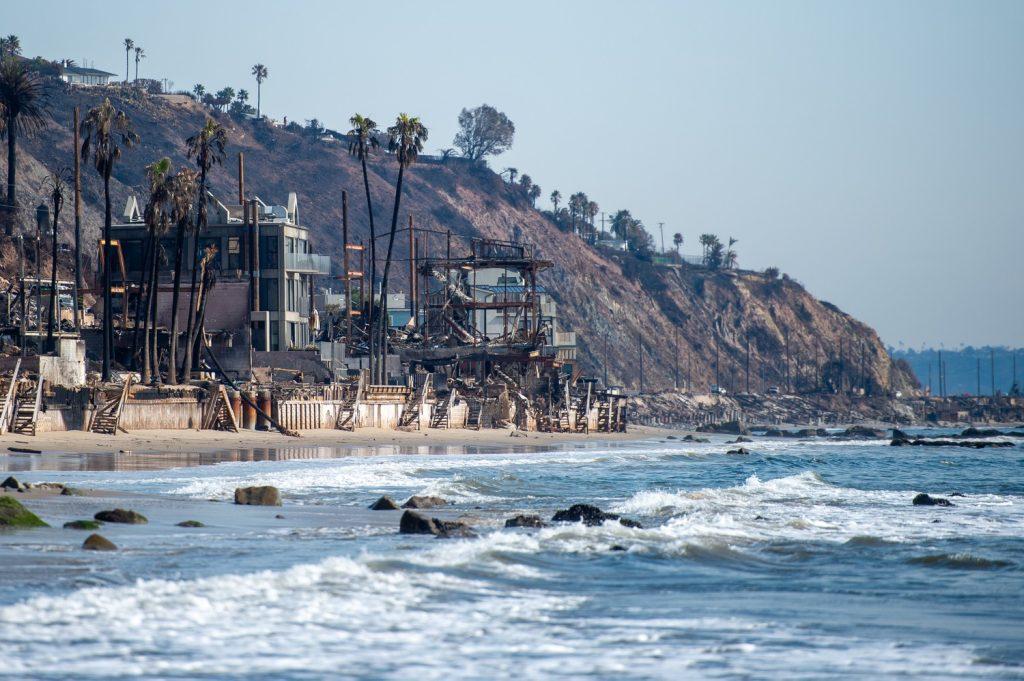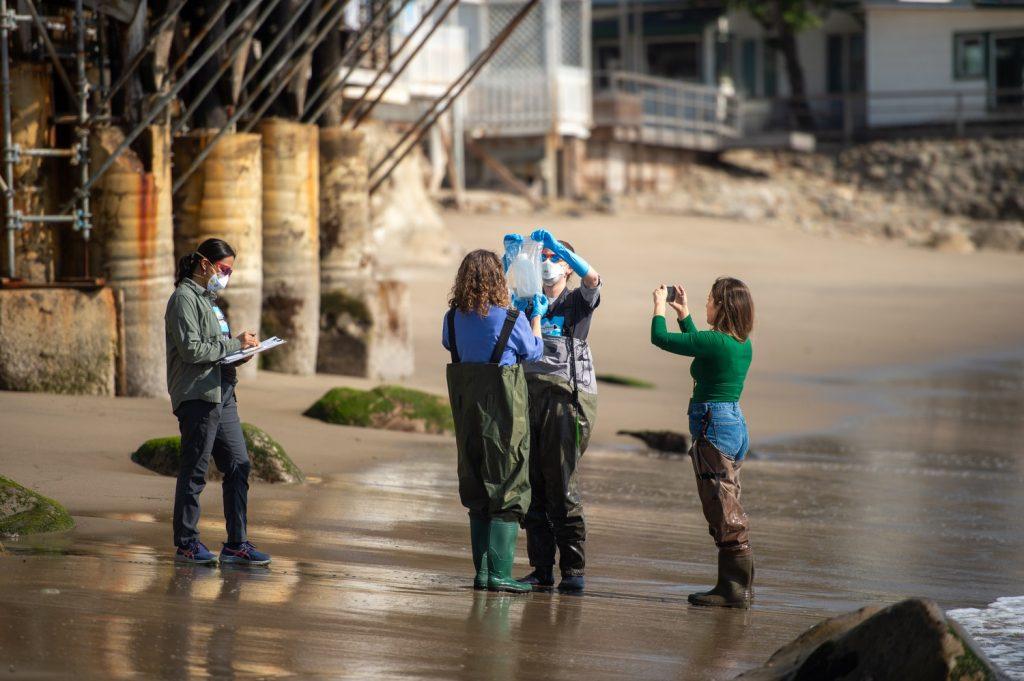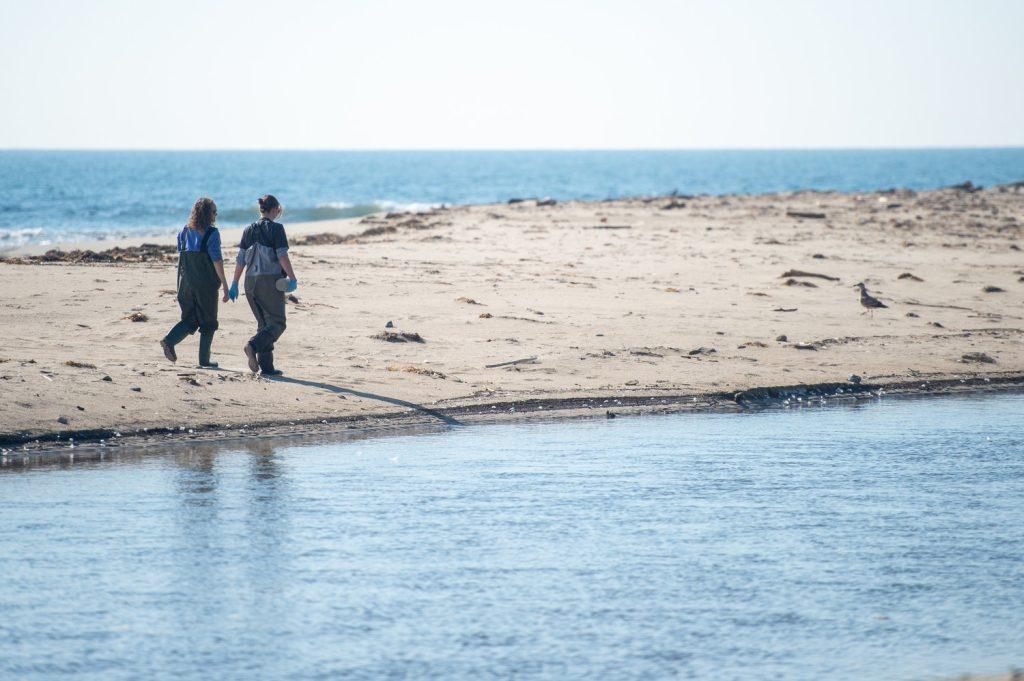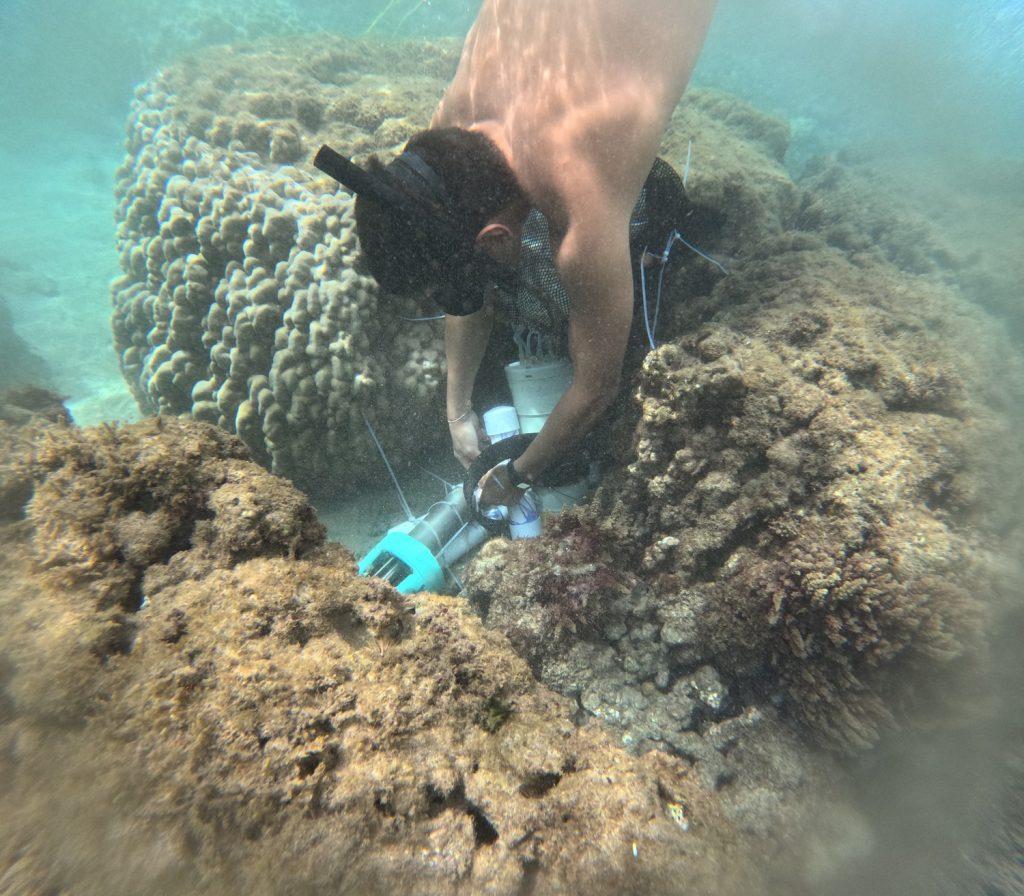Heal the Bay releases their water contamination test results March 27. The local organization in Santa Monica conducted tests along the coast following the Southern California fires. Photo courtesy of L.A. County Fire Department Photo Unit and Heal the Bay
While Heal the Bay shares their most recent ocean contamination results, a University of Hawaii marine geology assistant professor offers his advice from a fellow coastal area that’s experienced wildfire.
Nicholas Hawco is an assistant professor of Marine Geology and Geochemistry at the University of Hawaii. Following the containment of the Maui fires in August, 2023, he worked alongside Andrea Kealoha a fellow assistant professor at the university specializing in ocean acidification and ocean warming. In light of the recent Southern California fires, Hawco said from his personal experience, residents and local organizations are the most effective in making progress because of their close proximity.
“They’re the ones who are showing up all the time to community meetings,” Hawco said. “And so I think those community groups are the best-positioned ones to keep reminding, they’re the people in charge, whether they’re, you know, local government officials, or whether they’re state or national actors.”
Heal the Bay
A team from Heal the Bay conduct ocean contamination testing for their report released to the public March 27. Naomi Meurice, a water quality data associate specialist for Heal the Bay said they are continuing to analyze the Department of Public Health’s data. Photo courtesy of LA County Fire Department Photo Unit and Heal the Bay
A local organization acting as a watchdog for the community is Heal the Bay in Santa Monica. Naomi Meurice, a water quality data associate specialist for Heal the Bay, was on the front lines of testing the coastal areas most affected by the wildfires.
She said the organization is positioned to keep an eye out as they analyze data released by the Department of Public Health. Heal the Bay is also monitoring when Pacific Coast Highway opens, to keep an eye on ocean safety as the public begins to return to normal beach activities.
“We’re sort of like the watchdogs in the area,” Maurice said.
Heal the Bay conducted testing, that was released to the public, from Paradise Cove all the way to Malibu Cove, covering a total of 10 different sites that were made available to the public March 27, according to their website. Heal the Bay used the California Ocean Plan to assess human health standards for ocean contaminants. From their testing, Meurice said they found higher levels of Polycyclic Aromatic Hydrocarbon in areas such as Big Rock and Dockweiler State Beach.
“These PHs are potential carcinogens, so it’s not something where if folks are going in the water once for 15 minutes, they’re necessarily going to necessarily get sick or have some sort of bad reaction, but it’s more so longer term,” Meurice said.
What beachgoers should watch out for is consistent exposure to these toxins, Meurice said.
Heal the Bay tested for beryllium, another heavy metal classified as an EPA carcinogen. Meurice said contact with this metal in small doses is OK, but surfers and avid beachgoers should take precautions so as to not overexpose themselves. Las Flores and Big Rock tested well above the human health average level.
The Big Rock area serves as a larger concern since the homes along the coast were wiped out by the fires.
“When the high tide goes up it’s basically hitting up against those houses and hitting up against the burned materials,” Meurice said.
Heal the Bay on the front lines of testing the coast for contamination. Meurice said during the testing she came across many debris along the shore that could be harmful to beachgoers. Photo courtesy of L.A. County Fire Department Photo Unit and Heal the Bay
When Meurice and the Heal the Bay team were testing the beach at Big Rock, she said she saw many leftover household materials such as washer dryers, nails and wood. These materials are contributing to the elevated levels of beryllium.
Levels of contaminants such as copper, chromium, nickel and lead surpassed average levels, Meurice said.
Beaches located in the burn zones such as Las Flores down toward Santa Monica State Beach have an increased amount of debris and water contaminates, Meurice said.
“Heal the Bay is suggesting that people avoid both the beach water and the sand on the beaches from those areas,” Meurice said.
The Department of Public Health is another agency conducting testing in two forms: sand sampling and water quality testing, and Meurice said the department has similar results to Heal the Bay.
Maurice explained the Department of Public Health has issued an ocean water advisory from Las Flores to Santa Monica State Beach at Montana, meaning they are advising the public not to enter the water between these points. Whereas, Heal the Bay is advising the public to avoid the beach and the water at these locations.
“Just try to be a little more cautious knowing that there’s a lot of debris on the beaches and things like that,” Maurice said.
Heal the Bay is issuing a cautionary warning while advising beachgoers to be vigilant when visiting beaches located outside of the burn zone, Meurice said. Beachgoers may encounter burned structures, nails and glass, Meurice said. Although the water may be safer, the same can not necessarily be said for the sand.
Beaches that have lower risk include those in the South Bay and North of the burn zone, but it comes down to the public’s own decision to take a risk.
“We’re urging people to just be careful like if you’re bringing kids or dogs to the beach not letting them eat anything on the beach,” Meurice said.
The good news is many of the contaminants that Heal the Bay tested for came up as non-detected meaning that levels were not high enough to appear on on the scale. This is an indicator that dilution is happening in the ocean, Meurice said.
“We’ve never really seen anything like this before, to have a fire burn so close to the ocean,” Meurice said.
With all of the fires Malibu has endured over the years, Meurice said she has not seen one that has crossed the PCH creating such close contact between the burn area and the ocean.
Heal the Bay will not be doing any more of their own testing, Maurice said because of the organization’s lack of capacity, but they will continue to analyze the data from the Department of Public Health.
The University of Hawaii Testing After the Maui Fires
A team from the University of Hawaii tests the ocean for contamination following the Maui fires. Nicholas Hawco said it took their team awhile to find funding for the testing. Photo courtesy of Andrea Kealoha
When it came to testing the ocean for contaminants in Hawaii, Hawco said it took them a couple of months to find the funding to conduct their tests. However, in October 2023, they were well on their way, beginning with testing 12 sites along West Maui.
A concern the team had was the winter storms that would bring plentiful rain, sweeping the ash into the ocean, Hawco said. With the first rains they encountered, Hawco said the results weren’t at all what they were expecting.
In the harbor areas, there were higher levels of copper, lead and zinc but the reason due to the boats docked in the area. When they burned they released those metals, Hawco said.
Other than that, there weren’t many contaminants found in the water following the rainfall, Hawco reported.
During the Maui fires 2,000 homes and buildings were destroyed, according to NPR. With many of those homes along the coast, Hawco said again the team was surprised by their findings.
“It wasn’t as concerning as what we found near the harbors, which we were a little surprised by, but it was, I guess, a pleasant surprise because the threat wasn’t as bad as we feared,” Hawco said.
Hawco’s Advice From Lessons Learned in Hawaii
The University of Hawaii conducted a lot of testing on coral reefs and how they were affected by the Maui wildfires. Nicholas Hawco said a communities persistence is what makes a real difference when advocating for the environment. Photo courtesy of Andrea Kealoha
Hawco’s advice for communities experiencing similar circumstances who are working toward reducing ocean pollutants is to stay persistent. Hawco saw the impact of perseverance firsthand as he regularly flew from Oahu to Maui after the fires to conduct testing.
“I think just not giving up and keep showing up to community meetings, keep calling offices and reminding them that this is a thing that you’re concerned about is the most effective way to make sure that you know your concerns are being met,” Hawco said.
The beauty of local organizations is they are in close proximity to the ongoing issue and that can serve as a motivator to keep pursuing answers.
“A lot of the scientist groups like they can come in for a year or two years, but their attention, might get pulled somewhere else so they’re funding, my dry up, Hawco said. “It’s the local communities that sort of keep that long-term investment to really track these things.”
There are similarities between what Heal the Bay has assessed in their research and what the scientists from the University of Hawaii found during their testing following the Maui fires. Hawco said as scientists they were imagining the worst-case scenario, but it turned out to be quite the opposite.
“It was actually quite a relief that wasn’t actually what happened,” Hawco said about the testing results showing no toxic threat to human swimming.
Hawco said his hope in this was for people to continue to view the ocean as an inspiration, enjoyment and form of relaxation.
“These perturbations can be short-lived, and they can pass on, and then things can return to normal, as long as the stress isn’t too frequent and too intense,” Hawco said.
____________________
Follow the Graphic on X: @PeppGraphic
Contact Rachel Flynn via email: rachel.flynn@pepperdine.edu





